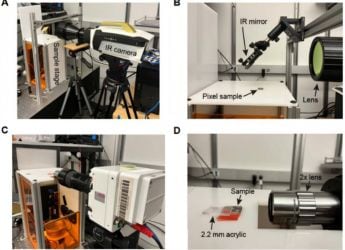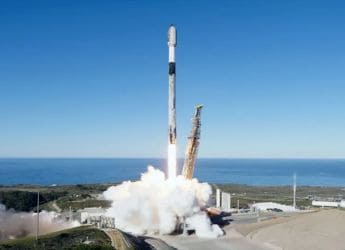- Home
- Science
- Science News
- NASA's InSight Lander Mission Detects Largest Marsquakes to Date Magnitude 4.2 and 4.1
NASA's InSight Lander Mission Detects Largest Marsquakes to Date - Magnitude 4.2 and 4.1
Researchers hope to learn more about the interior layers of Mars after studying the seismic data.

Photo Credit: NASA
A seismometer placed by NASA's InSight lander on Mars has detected the two biggest marsquakes to date. According to a new study, the seismic events were of magnitude 4.2 and magnitude 4.1. Both these quakes were five times stronger than the previous largest seismic event recorded.
Researchers now hope to learn more about the interior layers of Mars after studying the seismic data of these two events. Mars has been of vital interest as scientists plan to colonise the planet. And these events could give insights into whether sustainable human presence is feasible or not. Marsquakes are measured on specific spectral magnitude scale, whereas earthquakes are calculated using the Richter Magnitude Scale.
The researchers have located the origin of the magnitude 4.2 quake (called S0976a) in the Valles Marineris, a massive canyon network on Mars and one of the largest graben systems in the solar system. Scientists had long believed that this area could be seismically active but this event is the first confirmation of its seismic activity.
The second 4.1 magnitude marsquake (S1000a) was recorded 24 days after the first event, the Seismological Society of America said in a statement. This event was different from the first in the sense that it was the first time Pdiff waves, small amplitude waves that have traversed the core-mantle boundary, were detected a seismometer planted by NASA's Mars InSight lander mission.
![]()
This illustration shows NASA's InSight spacecraft with its instruments deployed on the Martian surface.
Photo Credit: NASA/JPL-CalTech
The researchers could not find its exact location except that it originated on the far side of Mars. This event was also special because the seismic energy released by it was the longest recorded on Mars, lasting 94 minutes.
Compared to the rest of the seismic activity detected by InSight, the two new quakes are true outliers, the researchers said.
![]()
Mars seismicity location map and surface relief map showing InSight's location
Photo Credit: The Seismic Record/ Seismological Society of America
“Not only are they the largest and most distant events by a considerable margin, S1000a has a spectrum and duration unlike any other event previously observed. They truly are remarkable events in the Martian seismic catalog,” said Anna Horleston of the University of Bristol, a researcher on the project. The research was published in the The Seismic Record journal by the Seismological Society of America.
Get your daily dose of tech news, reviews, and insights, in under 80 characters on Gadgets 360 Turbo. Connect with fellow tech lovers on our Forum. Follow us on X, Facebook, WhatsApp, Threads and Google News for instant updates. Catch all the action on our YouTube channel.
Related Stories
- Samsung Galaxy Unpacked 2025
- ChatGPT
- Redmi Note 14 Pro+
- iPhone 16
- Apple Vision Pro
- Oneplus 12
- OnePlus Nord CE 3 Lite 5G
- iPhone 13
- Xiaomi 14 Pro
- Oppo Find N3
- Tecno Spark Go (2023)
- Realme V30
- Best Phones Under 25000
- Samsung Galaxy S24 Series
- Cryptocurrency
- iQoo 12
- Samsung Galaxy S24 Ultra
- Giottus
- Samsung Galaxy Z Flip 5
- Apple 'Scary Fast'
- Housefull 5
- GoPro Hero 12 Black Review
- Invincible Season 2
- JioGlass
- HD Ready TV
- Laptop Under 50000
- Smartwatch Under 10000
- Latest Mobile Phones
- Compare Phones
- Jolla Phone
- Realme P4x 5G
- OnePlus Ace 6T
- Nubia Flip 3
- Nubia Fold
- OPPO A6x 5G
- Samsung Galaxy Z TriFold
- Poco F8 Ultra
- Asus ProArt P16
- MacBook Pro 14-inch (M5, 2025)
- OnePlus Pad Go 2
- Poco Pad M1
- Just Corseca Skywatch Pro
- Honor Watch X5
- Acerpure Nitro Z Series 100-inch QLED TV
- Samsung 43 Inch LED Ultra HD (4K) Smart TV (UA43UE81AFULXL)
- Asus ROG Ally
- Nintendo Switch Lite
- Haier 1.6 Ton 5 Star Inverter Split AC (HSU19G-MZAID5BN-INV)
- Haier 1.6 Ton 5 Star Inverter Split AC (HSU19G-MZAIM5BN-INV)

















